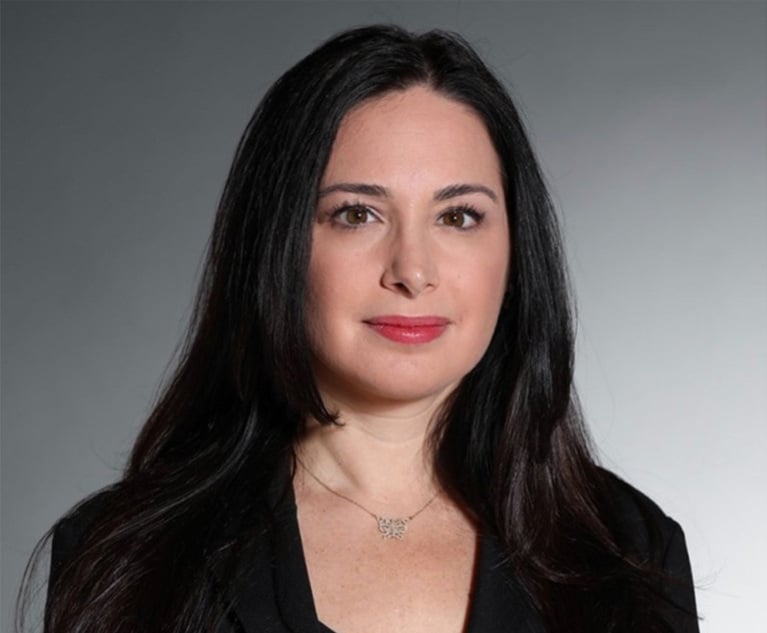**The following answers were completed by Santelle and edited lightly for style.**
What do you view as the two biggest opportunities for your firm, and what are the two biggest threats?
We compete with firms that are much larger than ours, which can be both an opportunity and a threat. Because of our size, we can be more agile than a lot of larger firms, which allows us to creatively staff matters and be competitive on price. In addition, in the last five to 10 years, the firm has focused on growing our presence in New York, Boston and North New Jersey, which has helped expand the talent pool, deepen our bench and bring on new and more diverse clients. We have a lot of cross-marketing opportunities with our client base within the industries we serve.
Clients continue to “insource” legal work traditionally done by outside law firms, which could be viewed as a threat but which I also view as an opportunity to collaborate with our clients to find new and better ways to deliver legal services and help them solve problems.
The legal market is so competitive now—what trends do you see, and has anything, including alternative service providers, altered your approach? Is your chief competition other mid-market firms, or is your firm competing against big firms for the same work?
We compete against all types and sizes of firms. We know that it is essential for us to develop strong and meaningful relationships with our clients (which is not a new concept). The competition in the marketplace inspires us to continue to be dedicated to understanding our clients’ businesses, staying on top of developments in our clients’ industries as well as the legal marketplace, and providing innovative solutions in the delivery of legal services. Now more than ever, it is critical to nurture client relationships to ensure that we are working with them to achieve their business goals.
There is much debate around how law firms can foster the next generation of legal talent. What advantages and disadvantages do midsize firms have in attracting and retaining young lawyers, particularly millennials?
There are so many advantages to working at a firm our size, including the ability to get hands-on experience sooner, direct exposure to senior attorneys as well as clients, and better work-life balance. Overall, a younger (or newer) attorney has more opportunities for engagement at a midsize firm. We are all competing for the same talent pool, however, so it is essential to be committed to and invested in the development and future of our younger (i.e., newer) lawyers.
Does your firm employ any nonlawyer professionals in high-level positions (e.g. COO, business development officer, chief strategy officer, etc.)? If so, why is it advantageous to have a nonlawyer in that role? If not, have you considered hiring any?
We operate the firm as a business and therefore employ a number of business professionals with diverse backgrounds as part of our leadership team. This is critical to addressing the myriad of issues that we face in the legal marketplace today. By functioning this way, we also allow our attorneys to focus on what they do best, serving our clients.
What would you say is the most innovative thing your firm has done recently, whether it be technology advancements, internal operations, how you work with clients, etc.?
We are implementing design thinking into our strategic planning, client relations and overall firm management/governance. It was the focus of a recent strategic planning session for all of our partners and counsel and will be utilized at our upcoming annual partner retreat. The impact has been immediate and very positive.
Does your firm have a succession plan in place? If so, what challenges do you face in trying to execute that plan? If you don’t currently have a plan, is it an issue your firm is thinking about?
In terms of firm management, we have management committees, which consist of partners who are elected and/or appointed firmwide or through a department election process. The 10-person executive committee (which I chair) oversees the process for succession of the managing partner as well as the other partners who sit on that committee.
In terms of individual partners, we have a procedure for transitioning to retirement, which is overseen by the executive committee. Starting at least three years before retirement, the partner submits a transition plan, which is updated annually, to address and ensure a smooth transition of client relationships, practice group responsibilities and administrative responsibilities.
The challenges in executing succession plans, as with other important administrative tasks within the firm, include (a) finding the balance between the practice of law and administrative responsibilities, and (b) making sure the appropriate successors are identified and developed along the way.


 Patricia Santelle.
Patricia Santelle.





